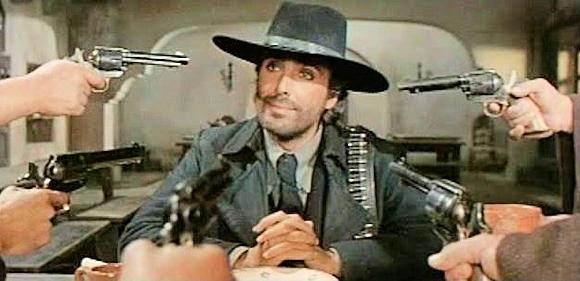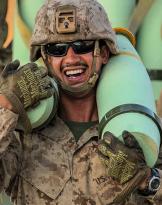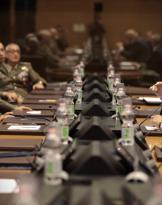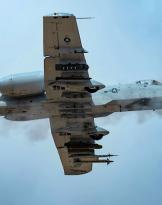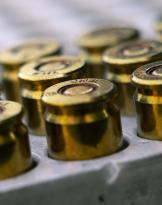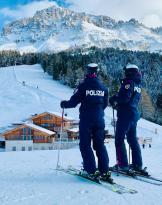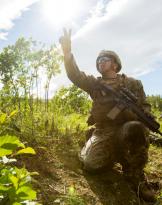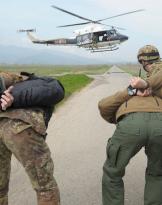14 September 2018 entered into force the new rules on weapons dictated by Legislative Decree 10 August 2018, n. 104, which implemented the European directive 2017 / 853 / UE, which was jointly approved by the European Parliament and the European Council, 17 May 2017 in our legal system (among the first to comply). The previous legislation on this subject has significantly changed, and in particular the Consolidated Law on Public Safety Laws (TULPS) rd 18 June 1931, n. 773, the law n. 110 of 1975 and above all the d.lgs 30 December 1992, n. 527, which had in turn implemented the 1991 / 477 / CEE directive.
The provisions just issued have given rise to a wide echo on the mass media, also generalists. In many, in this context, they felt they could identify in the reform - moreover as the implementation of European standards - the green light to the use of firearms in our country, if not a decided step towards the adoption of the reviled " American model ".
Let us therefore examine the essential data of the ius novumso that we can express our opinion on this.
The essential data of the reform: scope of application, ratio harmonization and novelty
The scope of application of the new provisions does not extend to weapons held by armed forces and police forces, by governmental and territorial bodies, or to the weapons materials referred to in the 9 July 1990 law, n. 185, and not even to historical weapons (but only the single-shot muzzle-loaders are excluded, while generally collectible weapons are included).
The new rules were dictated with the aim of harmonizing the legislation in force in the various countries of the European Union concerning the movement and possession of firearms.
In this regard, provision is made for:
-
more incisive controls for the purchase and possession of weapons;
-
the redefinition of the weapons categories in 3 classes (A, B and C), with the preparation of criteria and conditions for acquiring and distinct detention (without prejudice to the requirements already provided);
-
the marking of weapons in circulation within the countries of the Union;
-
the creation of a computer platform, so as to allow the competent authorities of the Member States to exchange information;
-
standardization of the duration of authorizations and licenses.

Among the most important news include:
-
the obligation to keep records for manufacturers and operators;
-
the increase in the quantity of weapons that can legitimately be held (from 6 to 12 for sports) and ammunition (from 15 to 20, for short weapons, and from 5 to 10, for long ones);
-
the reduction (from 6 to 5 years) of the duration of licenses for hunting and shooting;
-
the obligation to undergo a medical examination every 5 (and no longer every 6) years for the holders of common weapons. Holders of the ancient weapons collection license are exempted, and the subjects referred to in art. 73 of the TULPS regulation;
-
the introduction of new modes of detention complaint and shipping notice to the public authority (now also possible via certified mail, through a specific dedicated portal);
-
the abrogation of the obligation to communicate the detention to cohabitants (even if to be specified with the subsequent implementing regulations);
-
the extension of the category of "sport shooters" (no longer only CONI members, but also private polygons);
-
the prohibition on detaining and using camouflaged weapons, that is to say weapons originally manufactured or subsequently transformed in such a way as to acquire the appearance of another object (eg, the pistol-pen or the gun-sticks);
-
the introduction of distance buying and selling (but only for industrial or commercial purposes).
Short notes to comment on the most significant news
The analysis of the main changes introduced by the decree leads to believe unfounded rumors relating to excessive liberalization of the rules relating to the movement, possession and use of weapons. Let's see why.
1. Controls: the information system for traceability and (new) marking of weapons
The reform has intensified the controls already envisaged, setting up an information system for the traceability of weapons at the Public Security Department.
A similar system is established with the relevant authorities of the other Member States, so as to allow them to exchange any relevant information on the movement of arms and ammunition in Europe, and to have uniform control standards.
The aforementioned information system includesI:
-
for firearms: the type, brand, model, size, catalog number, classification according to European legislation, serial number and marking on the frame or shaft, as well as the serial number or the single marking applied to their parts, in the event that this differs from the marking on the frame or on the shaft;
-
the identification data of the suppliers, buyers and holders of the weapon;
-
the indication of the operations concerning each weapon and the date on which they were carried out (so-called traceability), the relative price, as well as the details of the qualification to purchase and, in the case of a natural person other than the entrepreneur, the place of residence;
-
data relating to any operation consisting of an irreversible transformation or modification of the firearm, which results in a change in the category or sub-category referred to in Annex I of the 91 / 477 / EEC Council Directive, of 18 June 1991, including the certified deactivation or destruction, and the date on which such operations took place;
-
specific indications for ammunition, weapons other than firearms and those with modest offensive capacity.

The controls, as well as the aforementioned information system, then pivot on the imposition of a more incisive obligation to mark the weapons. Article. 5 of the decree in question has modified the first paragraph of the art. 11 of the law n. 110 / 1975, establishing that "on weapons produced, assembled or introduced into the state, must be impressed, without delay, by the manufacturer, assembler or importer a single, clear and permanent marking, after manufacture, assembly, or importation". This general rule is then minutely specified in the subsequent paragraphs of the same provision.
Furthermore, the traceability of operations is facilitated by the enlargement (by duration and object) of the archive referred to in Legislative Decree 25 January 2010, n. 8, in which it is now foreseen that for every type of firearm, all the possible information (type, brand, model, size, serial number, marking, and so on, are included for 30 years from the date of destruction) the identification data of the supplier, the purchaser or the holder).
The combination of the aforementioned innovations produces a system of articulated and penetrating control, capable of guaranteeing an unprecedented monitoring in our country and more generally in Europe.
2. The elements of "flexibility" introduced by the reform
Of course, it is true that, on the other hand, the decree that just entered into force introduced elements of greater "flexibility" compared to the previous legislation, among which we highlight:
-
the increase in the number of sporting weapons that can legitimately be held and their ammunition;
-
the expansion of the category of "sport shooters";
-
the greater ease of communications regarding detention and transport (through the introduction of the possibility of proceeding via pec);
-
the introduction of distance buying and selling.
Among the aforementioned elements, the only one that could possibly base the alarmist positions in the abstract is the first one. The new modes of communication have the crisma of legality throughout the legal system and respond to a modernity, and the distance selling only applies to producers and suppliers, and not users, as it is only allowed to industrial or commercial purpose.
That said, the increase in the number of weapons that the individual can legitimately hold can really make one think of excessive liberalization?
It is considered not. And for more reasons, now known for some time:
1. the legitimized subjects to the use of the weapons do not increase, but the number of weapons that each of these can hold. Reasoning for absurd, it is really thought that a person who held six weapons (the maximum number previously allowed) could not be considered sufficiently "equipped" to carry out any crime that involves the use of a firearm, and that everything changes if the number of weapons goes to twelve? What matters is that they have not changed (as in fact they have not changed) the requirements for the granting of the firearms license and for the issue and renewal of licenses. On the contrary, the duration of licenses has been reduced by 6 to 5 years, and the frequency of checks on the assessment of psycho-physical fitness has increased (also in this case, we have moved from 6 to 5 years) . More controls, in short, also from this point of view. And the requirements were moreover specified (without any bending) by grouping the weapons into three categories as mentioned;
2. above all, there is no evidence of the existence of a necessary correlation, of a relationship of direct proportionality, between the number of weapons in circulation and the number of crimes committed through their employment. In particular, if more weapons meant more deaths, and less weapons meant fewer deaths, it should follow that: a) the geographical areas with a higher level of weapon owners should have more murders than those with fewer weapons owners; b) demographic groups with multiple weapons owners should be more prone to killing than those with fewer weapons owners; c) the historical periods in which the weapon owners have increased should have a higher number of homicides than those in which weapons have spread less.
 Kates's studiesIIand the results of a recent report on behalf of the European institutions themselvesIII, as well as an even more recent study of the University of LiègeIV, show that the aforementioned assumption is not reflected in the reality of the facts.
Kates's studiesIIand the results of a recent report on behalf of the European institutions themselvesIII, as well as an even more recent study of the University of LiègeIV, show that the aforementioned assumption is not reflected in the reality of the facts.
The most striking examples are those of Switzerland (in the 2008, 20 gunshot killings, compared with more than 2,3 million legitimately reported weapons) and, on the contrary, Russia (with a murder rate of twenty times that of of France, Belgium, Norway and Finland, and over 10 times the European average, despite much more restrictive legislation).
What is important then is not the number of weapons, but the control that the State is able to exercise on the circulation (through appropriate traceability systems), the possession and use of the same (through the strict requirements for the granting of the port of weapons), as well as before the social, environmental and economic factors that can condition individuals and lead them to dangerous behavior.
In conclusion
In the face of the above, a system of control that is so analytical and articulated, like the one that the new provisions seem able to guarantee, really makes the voices appear unfounded - even though they have risen in chorus, and from several fronts, at the time of approval of the decree - of an excessive liberalization of the rules relating to the circulation, possession and use of firearms in our legal system, and more generally within the European Union.
The contrary is true: the tools introduced (the information system for the traceability of arms and the exchange of information between States, the new regulation of the marking of weapons and the traceability system of operations, without prejudice to the requirements already provided previously for the granting of the license) assure the competent authorities the possibility to carry out a constant and widespread monitoring in relation to any profile and activity that has the slightest importance in the field of firearms. And they do so, in a way and in a way that they can not even be compared to what happened in the past.
Avv. Francesco Fameli
expert in military administrative law
I The complete list is dictated by the art. 11 of the legislative decree n. 104 / 2018.
II The reference is to Don Bernard Kates Jr., Armed: New Perspectives on Gun Control, 2001. The previous one is also mentioned by the same author Firearms and Violence: Issues of Public Policy, of the 1984.
III The FIRE Final Report of Project is recalled - Fighting Illicit firearms trafficking Routes and actors at European level, concluded in 2013 thanks to the contribution of the Catholic University of the Sacred Heart of Milan and co-financed by the European Program for the Fight against Crime. basis of the recently adopted European directive. You can consult the site http://fireproject.eu/wp-content/uploads/2017/03/FIREFinalReport.pdf.
IV Here we refer to the study presented at Nuremberg by the Faculty of Political Science and the University of Liège at the World Forum on Shooting Activities (WFSA), in the 2015, with the title Factors influencing the rate of homicides by firearms and available at the site https://docs.wixstatic.com/ugd/3fd127_86f3aa1fb00145e7a6d45d0fe79dcc23.pdf.
(photo: web)

